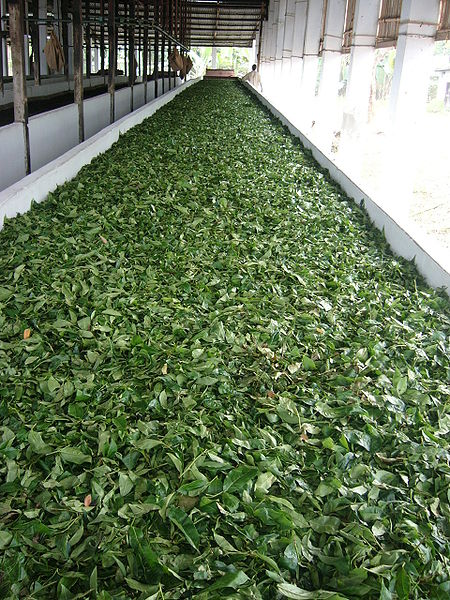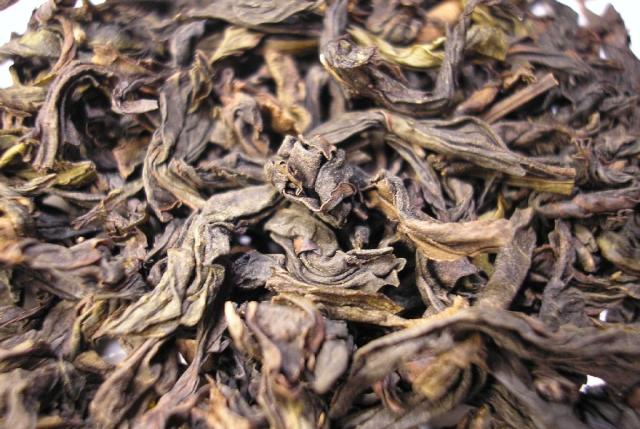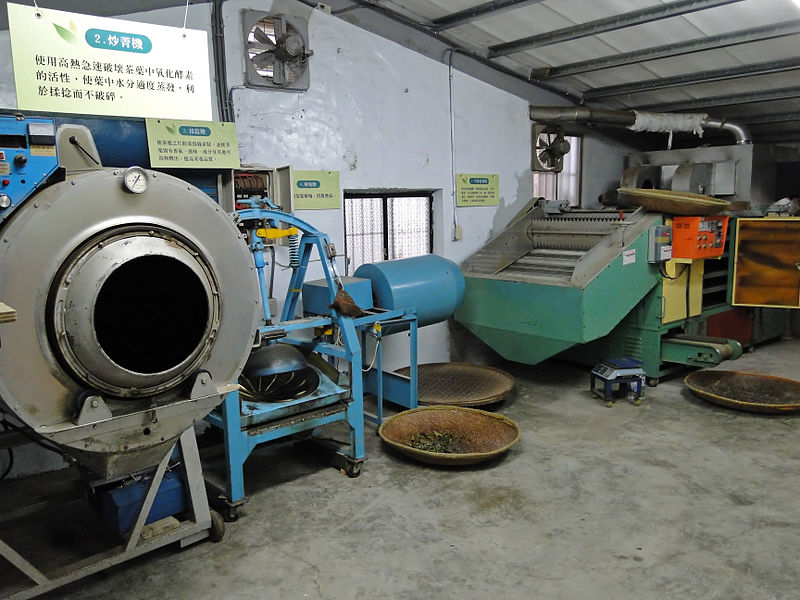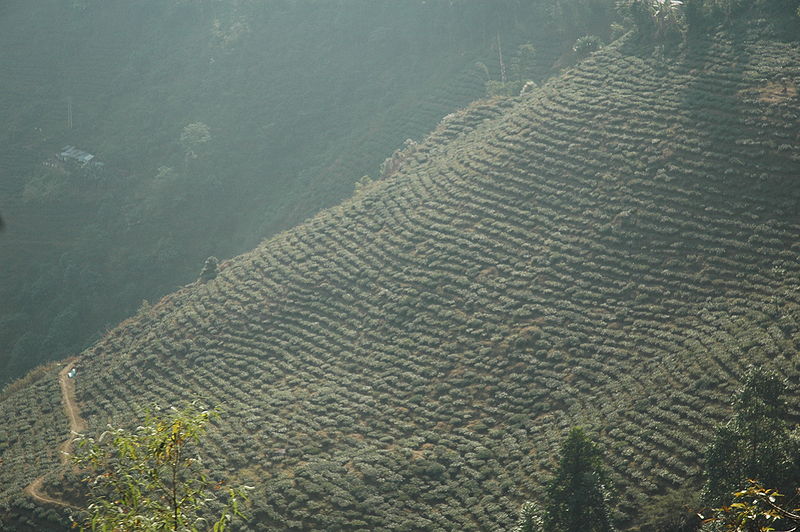Types of tea, how to make it

Tea lovers are a plenty. It is easy to give up meals. But it is difficult to live without drinking at least a cup of tea, in a third of a day. There are many kinds of teas that have become a part of daily life. Let us learn about them.
You might have noticed that tea comes in different forms, like flakes, powder or leaves. The tea leaves or powder that we use comes from a plant called Camellia Sinensis. Various kinds of tea is produced, depending on the way processed leaves of this plant are blended. Tea is processed in at least seven ways. The key factor in this is oxidation. Depending on the variety of tea, oxidation is done at different stages. Later, it is dried. Leaves are processed to remove moisture. Otherwise, there will be fungus on tea leaves. Each tea variety has a different taste and aroma.
Tea leaves process
The leaves are situated on either side of the bud on the stem. This part is plugged. Twice in a year, in the Spring season and summer, the leaves are plucked. If the quality of tea is to be maintained, the leaves are to be plucked by hand. Even though plucking through a machine saves a lot of time, tea leaves are plucked only with the hand, to maintain quality.
in a year, in the Spring season and summer, the leaves are plucked. If the quality of tea is to be maintained, the leaves are to be plucked by hand. Even though plucking through a machine saves a lot of time, tea leaves are plucked only with the hand, to maintain quality.
The leaves are situated on either side of the bud on the stem. This part is plugged. Twice
 in a year, in the Spring season and summer, the leaves are plucked. If the quality of tea is to be maintained, the leaves are to be plucked by hand. Even though plucking through a machine saves a lot of time, tea leaves are plucked only with the hand, to maintain quality.
in a year, in the Spring season and summer, the leaves are plucked. If the quality of tea is to be maintained, the leaves are to be plucked by hand. Even though plucking through a machine saves a lot of time, tea leaves are plucked only with the hand, to maintain quality.After plucking the tea leaves, the moisture has to be removed. Also, taste has to be enhanced. For this, the leaves are dried. This is done in sheds, in the open. In this process, 30 per cent of the moisture in the leaves is lost. The weight of leaves is reduced by 25 per cent.
Oxidation: This is a key part in processing. They are left in a room where the temperature is maintained evenly and they turn black. Chlorophyl in the leaves is destroyed. This is also called fermentation. It is on this that quality depends. For example, in oolong tea, oxidation is done at five to 40 degree. In darker oolong tea, the same is 60-70 per cent and 100 per cent in black tea. Oxidation determines the taste and aroma. By heating the tea leaves moderately also, the process can be completed.
Rolling: Tea leaves are rolled up from one edge. This is done with the hands or on a machine.
Drying: Fungus is formed if there is any moisture in the leaves. That is why the moisture is removed, in the beginning of the process itself. By drying, the moisture in the leaves is reduced to less than one per cent. As such, tea leaves are preserved for a long time. The moisture is also removed by frying them in low heat. This is a very delicate process as quality is lost if there are any mistakes and also the taste becomes bitter.
Do you know this?
In China, some kinds of tea leaves are preserved over years at a stretch. Old tea leaves have the same demand as old wine.
How many kinds?
 White tea: This is unprocessed tea leaves. It is made out of tender tea buds, at the end of the stem. This is rich in quality, when compared with others. However, there is difference in making of this tea, between China and other countries.
White tea: This is unprocessed tea leaves. It is made out of tender tea buds, at the end of the stem. This is rich in quality, when compared with others. However, there is difference in making of this tea, between China and other countries.Green tea: The oxidation is very less. In Japan, the leaves are left in hot water steam. In China, the leaves are dried on a hot pan. Then the leaves are rolled. Finally, they are dried. Green tea is very popular, world-wide. It is considered very healthy, as it has adequate anti-oxidants. Some aromatic substances are mixed to process these leaves. Original green tea is clean and tasty.
Yellow tea: Yellow tea is processed in the same manner as green tea. The process of preparing these leaves is long. They are left to turn yellow, in natural oxidation process. Then the process continues to get the right taste and power. Caffeine is less in these leaves.
There are oolong (Chinese) and black tea varieties. Herbal and masala tea are made, by mixing Ayurvedic roots to tea. The herbs are boiled in hot water, as their qualities are imbibed by the tea leaves in the process. Rooibos and Mate-tea are teas made without the use of tea leaves. Rooibos is made out of a plant called red bush in South Africa. This is also called red tea. It is taken hot or cold. Mate-tea is made of a wild shrub in Argentina. This tastes like coffee.
 Quality: Tea Board of India (TBI) examines the quality of tea. Tea is tested based on taste, aroma, colour, formation of the leaves, etc. There is a difference in quality in tea grown in two different areas. Quality is also determined, depending on the environment (heat, moisture, sunrays, rainfall), soil fertility, species of the trees and processing. Manure and plucking of tea leaves is an important factor.
Quality: Tea Board of India (TBI) examines the quality of tea. Tea is tested based on taste, aroma, colour, formation of the leaves, etc. There is a difference in quality in tea grown in two different areas. Quality is also determined, depending on the environment (heat, moisture, sunrays, rainfall), soil fertility, species of the trees and processing. Manure and plucking of tea leaves is an important factor.Which tea in which mood?
Strong power in black tea stimulates mentally. Those who prefer freshness, white tea is good. It has adequate anti-oxidants and is light. Green tea is the best option for getting rid of stress. For quenching excessive thirst, oolong or barley tea are the best.
Tea is grown in India in
Darjeeling, Assam, Dooars, Terai, Nilgiris, Annamalai, Menad, Karnataka, Munnar, and Travancore.
Darjeeling tea
 Darjeeling tea is very popular, internationally. It has Muscat flower in it. The variety that is grown here is not grown anywhere else in the world. That is why the price is also more.
Darjeeling tea is very popular, internationally. It has Muscat flower in it. The variety that is grown here is not grown anywhere else in the world. That is why the price is also more.Assam tea
North Brahmaputra Valley in Assam, Kabri, Kacchar hills, Barak valley, are full of tea estates. This is the area where tea is grown in the widest area, at one place, in the world.
Dooars, Terai
The English began growing tea at Champba of Terai in West Bengal, in 1862. For the first time, tea estates started in Dubi and Gajel areas of Dooars region. Annually, Rs. 22.6 cr. kilos of tea is produced here. At least 25 per cent of the tea comes from here, in India.
Kangra tea
Tea estates began in 1829 at Kangra district of Himachal Pradesh. A variety of teas were brought from China and grown here. Tea is grown with natural manure all over Kangra Valley. The green and black tea varieties from here are internationally famous.
Nilgiri tea
 Niligiri Hills that are spread over Tamil Nadu, Karnataka and Kerala areas are famous for tea estates. Tea was first grown in Ketti Valley in 1853. Because of the congenial weather, the tea from here is very tasty. This area contributes to 10 per cent of the tea in the country.
Niligiri Hills that are spread over Tamil Nadu, Karnataka and Kerala areas are famous for tea estates. Tea was first grown in Ketti Valley in 1853. Because of the congenial weather, the tea from here is very tasty. This area contributes to 10 per cent of the tea in the country.Karnataka tea
Karnataka is famous for growing coffee plantations. About 50 lakh kg of tea is grown here, annually. Tea estates are mostly seen in Chikmagalur area.










